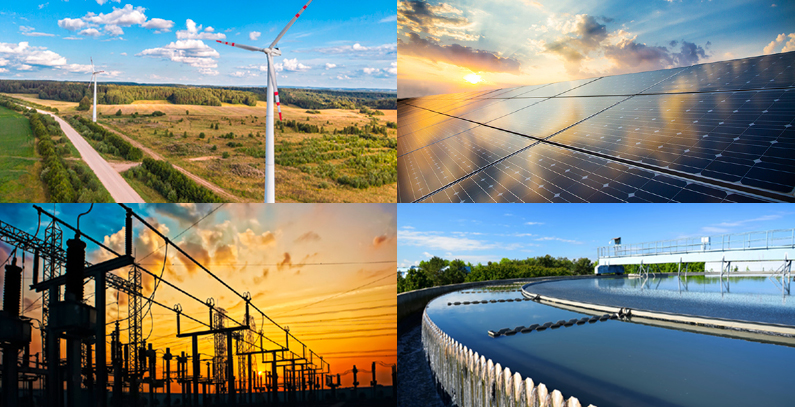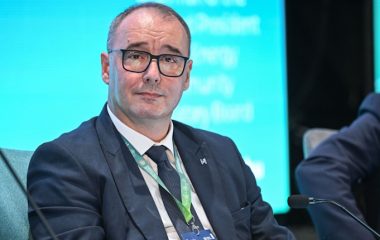
Photo: CMS
Authors: Georg Gutfleisch, Lawyer, Corporate/M&A, CMS Austria, Marco Selenic, Associate, M&A, CMS Austria
Based on the EU’s Clean Energy for all Europeans package, Austria is one of the first countries in Europe, which has presented draft legislation on so-called energy communities. Energy communities are supposed to foster the decentralization of renewable energy generation and increase citizen participation in renewable energy projects.
INTRODUCTION
The fight against climate change is (besides handling the current COVID-19 pandemic) arguably the most important goal of governments worldwide. As early as 2014, the European Council adopted resolutions requiring all EU member states to decrease greenhouse gas emissions by at least 40 %, increase the share of energy from renewable sources by at least 27 %, and increase energy efficiency by at least 27 % by 2030 compared to 1990 levels. Despite these ambitious targets, however, it seems that the legislative measures have so far only been implemented sporadically at the European scale. The legal framework “Clean Energy for all Europeans” aims at changing this situation for the better.
A potential factor for success on the path to a more sustainable energy future can be seen in the participation of citizens and (local) communities as institutional partners in renewable energy projects. The transition from mostly fossil fuel-based energy sources to a more sustainable renewable energy system might only be achieved if renewable energy resources are used as efficiently as possible – by decentralizing renewable energy generation, distribution, and consumption, for instance. This is where energy communities come in: If a household has a photovoltaic system on its roof which generates more electricity than the household consumes, why can’t it directly distribute the excess energy within the local municipality or community (for instance, to neighbours, municipal institutions or local businesses)?
With Directive (EU) 2018/2001 on the promotion of the use of energy from renewable sources and Directive (EU) 2019/944 on common rules for the internal electricity market, the European legislator not only introduced a comprehensive reorganisation of the European funding and subsidies framework in the field of renewable energy, but also addressed the issue of citizen participation in order to foster a renewable energy revolution in Europe.
Austria is one of the first countries in Europe to present draft legislation that provides for the implementation of energy communities based on the EU’s Clean Energy for all Europeans package.
ENERGY COMMUNITIES IN AUSTRIA
The status-quo in Austria
Since 2017, the Austrian legislator enabled the establishment of so-called community generation facilities (Gemeinschaftliche Erzeugungsanlagen) pursuant to the Austrian Electricity Industry Act (Elektizitätswirtschafts- und -organisationsgesetz 2010, “EIA 2010“). According to the EIA 2010, renewable electricity generated by a renewable energy system installed on the premises of a multi-party apartment building, usually a photovoltaic plant, can be made available for direct consumption by its inhabitants/tenants. The generation, distribution, and consumption of self-produced electricity beyond the premises of a specific property has – until now – only been possible under strict regulatory requirements.
In September 2020, the Austrian government, by implementing the requirements imposed by Directive (EU) 2018/2001 and Directive (EU) 2019/944, published its draft of the Renewable Energy Expansion Act (Erneuerbaren-Ausbau-Gesetz, “REEA“). As the core legislation on Austria’s path to reach its contribution to European-wide clean energy ambitions, it is dedicated to generating electricity through 100 % renewable energy sources by 2030 and reaching carbon-neutrality by 2040 at the latest.
Alongside measures like introducing market premiums to promote the generation of electricity from hydropower, wind power, photovoltaics and solid biomass or creating a framework for investment grants for constructing, revitalising and expanding renewables, the REEA will enable the creation of two different types of energy communities: (i) renewable energy communities (Erneuerbare Energiegemeinschaften, “RECs“), and (ii) citizens energy communities (Bürgerenergiegemeinschaften, “CECs“).
Renewable Energy Communities (RECs)
According to the draft REEA, a REC may produce electricity from (strictly) renewable energy sources and consume, store, or sell the energy it has produced within the community. Additionally, a REC may also be active in the field of aggregating self-produced electricity and provide ancillary energy services. The draft REEA does not prohibit the REC from storing or selling energy it has not generated itself. However, if the REC wants to do this, it must comply with the legal provisions related to these activities. Other actors in the energy sector, such as the network operators, are legally obliged to cooperate and enable the establishment and operation of RECs (e.g. by assisting in measuring and invoicing the electricity produced, sold, or consumed within the REC).
Participation in a REC is strictly voluntary for its members. The main purpose of a REC, as well as its members’ participation, is not primarily financial gain, but achieving ecological, economic, or social benefits for its members or the regions in which they are active. The draft REEA foresees several economic advantages for REC members: First, if the public grid is used to transfer energy within a REC, a reduced grid fee will be granted. Second, it is planned to exempt RECs from the obligation to pay Electricity Duty (currently 1.5 cent/kWh). Third, members profit from exemption of the Renewable Contribution Duty in relation to electricity produced and consumed within the REC.
The members of an REC must be located in direct proximity of the generation facilities embedded in the REC. The draft REEA defines the relevant proximity by referring to network levels: The consumption systems of the participating members must be connected to the generation facility via the low-voltage distribution network (local area) or via the medium voltage network (regional area). Depending on the exact location, this means that members of the REC can be up to dozens of kilometres apart, thereby enabling RECs to be large enough to become economically feasible. As a result, rural municipalities could jointly operate photovoltaic systems or wind farms as RECs. However, each generation facility or consumption system can only be assigned to one REC at a time.
One of the main aspects of the draft REEA concerns the organisation of RECs. According to the draft REEA, RECs are independent legal persons with at least two members (such as private individuals, SMEs, and municipalities). Several legal forms can be used for their organisation, such as private associations (Vereine), cooperatives (Genossenschaften), partnerships, limited liability companies, or condominium communities (Wohnungseigentumsgemeinschaften). According to the draft REEA, the rights and obligations of the REC members will be governed by its constitutional documents (as a legal person), which must – besides statutory requirements depending on the chosen legal form – include at least the following:
- a description of how the generation plant(s) (storage plant(s) if applicable) function and an indication of the metering point numbers;
- a description of the participating members’ consumption units and an indication of their metering point numbers;
- rules on the notional share of each participating member and how the energy produced is to be distributed amongst those members;
- rules on the allocation of feed-in energy not consumed by the participating members as per a fifteen-minute interval;
- rules on data management and processing by the grid operator of the generation plant’s (or plants’) energy data and participating members’ consumption units;
- rules on the operation, maintenance, and repair of the generation plant(s) and how costs are to be borne;
- rules on the allocation of liability;
- rules on the proceedings for the admission and withdrawal of participating members;
- rules on the termination or dissolution of the renewable energy community and dismantling of the production plant(s) (storage plant(s) if applicable);
- rules on insurance policies (if any).
RECs must submit their constitutional documents as well as any amendments to their respective network operator.
Citizen Energy Communities (CECs)
In the course of the draft REEA, the Austrian legislator has also introduced a new section to the EIA 2010, which enables the establishment of CECs. Like RECs, CECs conforming with the EIA 2010 are generally organised as independent legal persons in the legal form of a private association (Verein), cooperative (Genossenschaft), partnership, limited liability company, or condominium community (Wohnungseigentumsgemeinschaft), in each case, the participation of its members being strictly voluntary and its purpose generally non-profit.
At first sight, CECs have a similar structure to RECs, however, they dispose of three important differences:
- Unlike RECs, the CEC’s production, distribution, and consumption of energy is not limited to renewable energy sources (but to electricity).
- While only natural persons, regional authorities and small companies can participate in a REC, the EIA 2010 would also allow other stakeholders, such as large corporations, to join a CEC (such a member may not, however, exercise control over the CEC).
- There is no proximity requirement (as mandated by the REEA according to which RECs may only distribute electricity over the low-voltage distribution network or via the medium voltage network); participating members in a CEC may be situated anywhere in Austria.
As a result, while RECs primarily focus on the expansion, local use and promotion of renewable energies within a limited geographical area (such as in municipalities or (rural) regions), CECs make possible the emergence of a new market participant at a national level in Austria that also includes other participants and stakeholders. Both approaches allow the community to produce, store, use and sell energy, a capacity which – until now, under the EIA 2010 – has only been available on a case-by-case basis under the existing community generation facility framework (Erzeugungsanlagen).
EVALUATION PROCESS AND OUTLOOK
After publishing the draft REEA in September 2020, the public was able to review and comment on the draft for a period of six weeks, which ended in October 2020. During this time, the Austrian government received a total of 127 statements from a broad range of stakeholders involved in the Austrian energy market, which shows not only the great interest in the topic, but also the potential significance of this new piece of legislation to the Austrian energy sector.
Several statements originated from energy communities requesting some of the proposed features be clarified and reconsidered. One requests the rule that the generation facility must be owned either by the energy community itself or by a member/shareholder of the energy community, thereby excluding contracting models. Another proposal explicitly suggests that the current Community Generation Facilities are integrated into energy communities. Other stakeholders advocated for the benefits that apply to energy communities (such as reduced grid expenses) to apply similarly to other (innovative) forms of energy sharing already established in the Austrian market. From a mere legal perspective, it must be noted that the proposed draft of the REEA leaves several civil (liability), corporate (unclear with regard to profits), and data-protection-law-related issues unresolved.
The Austrian government originally intended the REEA to come into force on 1 January 2021. Unfortunately, according to the responsible Ministry for Energy and Climate Change this date will not hold due to the nostrification proceedings of the EU Commission. Although the details of the REEA concerning energy communities arguably need further refinement, one conclusion can already be drawn: The introduction of energy communities will significantly alter the energy landscape in Austria and beyond.


















Be the first one to comment on this article.